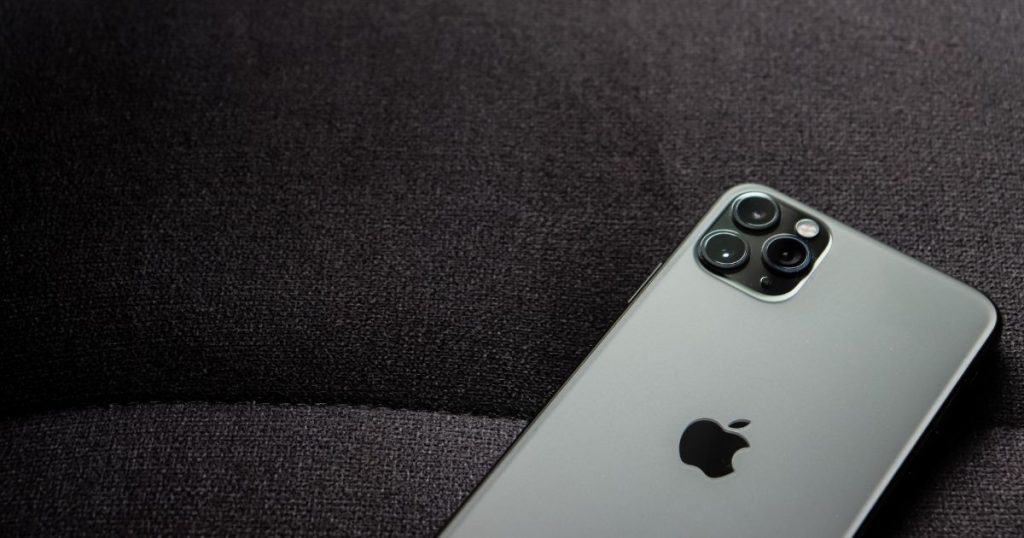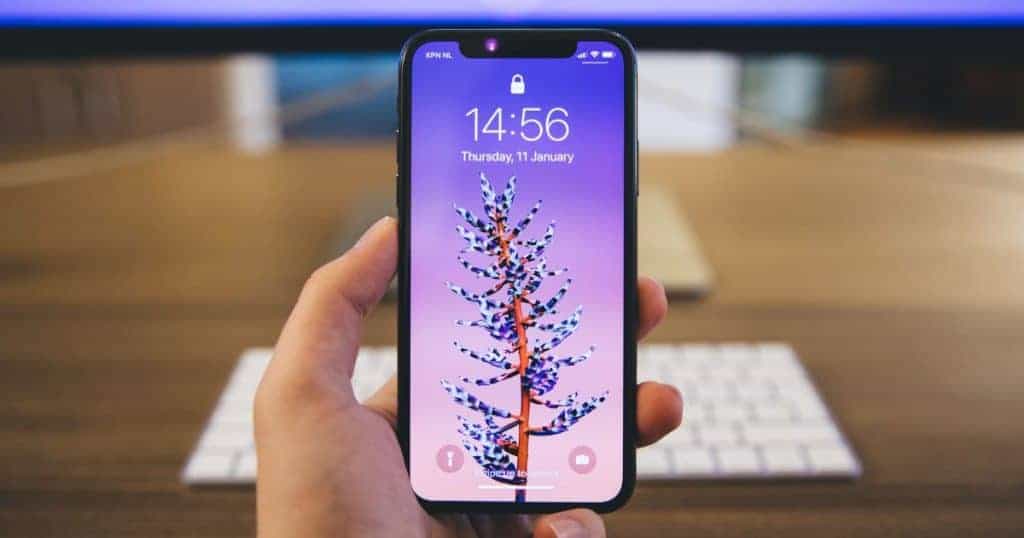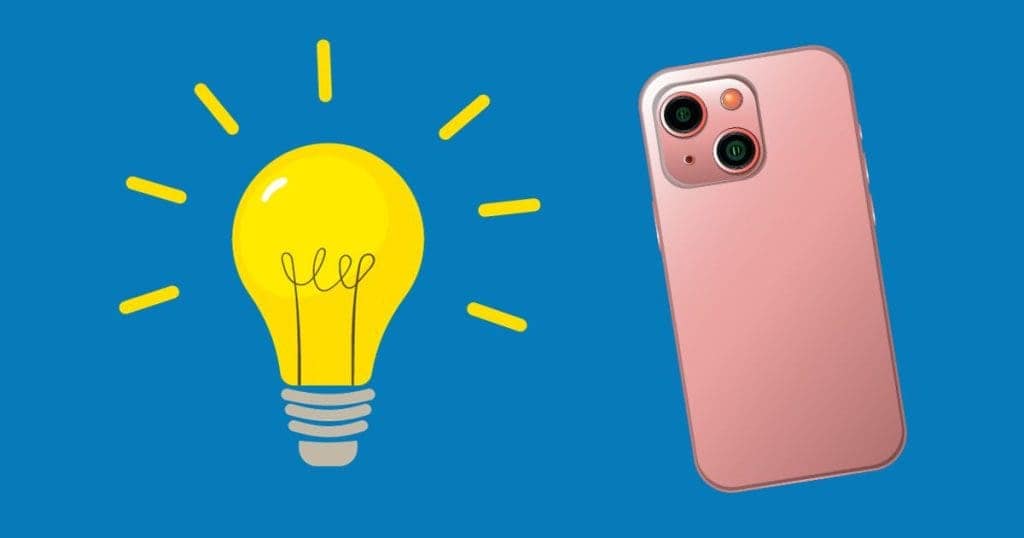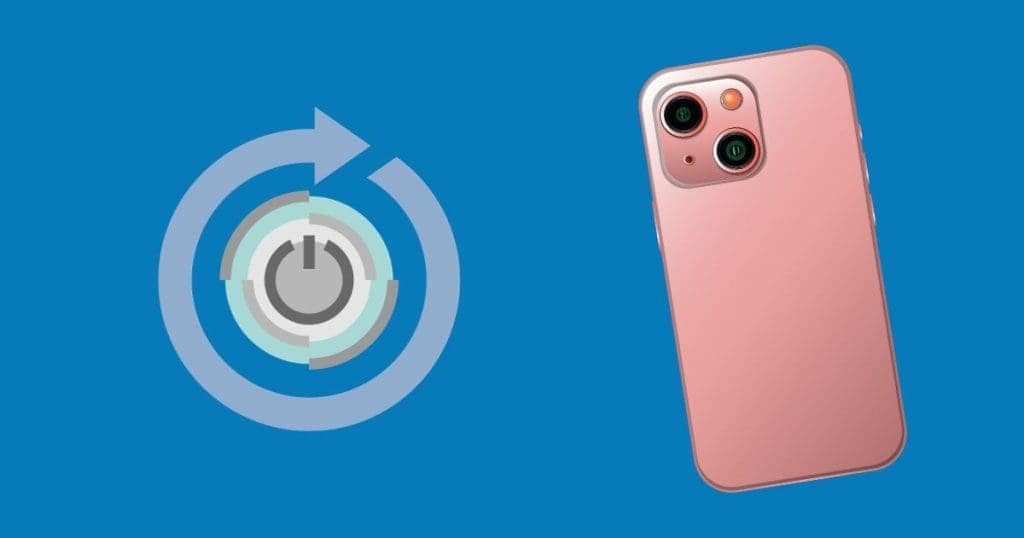What to Know
Whether your iPhone’s acting up or you’re just lookin’ to give it a quick refresh, knowing how to restart your device can be a real lifesaver.
And hey, the good news is, it’s a piece of cake and won’t even mess with your data or settings.
So sit tight, ’cause we’re diving into the nitty-gritty of getting your iPhone back on its feet with a standard restart, and if needed, we’ll tackle the force restart too.
It’s like giving your iPhone a nice little nap.
Waking up fresh, it might just do the trick to kick those glitches to the curb.
But sometimes, your iPhone may play hardball and ignore your gentle nudge.
That’s when the force restart moves come out, a bit like a tech version of CPR, to get your gadget up and running when it’s stubborn.
From the latest iPhone 13 to older models with buttons that may feel like a relic of a bygone era, we’ve got you covered.
We’ll walk you through each step, so you can master the art of rebooting like a pro.
Alright, let’s get to it and breathe some life back into that fancy paperweight of yours.
The Basics of How to Restart iPhone

Alright, first base—the soft reset. This basic procedure is the tech equivalent of “Have you tried turning it off and on again?”
It’s usually the first thing you’ll wanna try when your iPhone gets a mind of its own. And before you fret, let me reassure you – it won’t chuck your data or settings.
You’re just giving your phone a breather, that’s all.
Then there’s the force restart – it’s the big gun for when your iPhone is frozen solid or if it’s ignoring your taps and swipes like you’re invisible.
You’ll be using a special button voodoo, which, by the way, varies depending on whether you’re rocking an iPhone 8, an iPhone 12, or the swanky iPhone 13.
No matter what, though, you’ll keep your data safe and sound.
Understanding Soft Reset vs. Force Restart iPhone
A soft reset is like your iPhone’s chill pill; it settles things down without losing your stuff. Now, if we’re talking force restart, that’s a different beast altogether.
It’s your go-to move when your iPhone’s touchscreen throws a tantrum, or apps start going sideways.
Either way, your precious data stays put. It’s like knocking sense into it without the fear of losing memories.
Picture this: You’re chilling, scrolling through your feed when suddenly, your iPhone decides to freeze. That’s your cue for a force restart.
Unlike the gentler soft reset, the force restart doesn’t mess around. You’ll use the hardware keys to wake your device from its digital slumber.
And hey, if you need to pull out the big factory reset cannon, remember that’s the one that’s gonna swipe your iPhone’s memory clean.
Make sure you’ve got a backup tucked away before you go down that road.
When to Opt for a Force Restart iPhone
Let me paint a picture: You’re battling an iPhone that’s about as responsive as a brick. The usual turn it off and on isn’t cuttin’ it.
That’s showtime for the forced restart, my friend—your trusty plan B.
It’s like a superhero swooping in to save the day when plan A (a simple restart) leaves you hanging.
But don’t sweat it, ’cause it’s just another way to get your iPhone to play nice without giving you data-loss heartache.
Now, the buttons you’ll need to serenade to get that forced restart vary by iPhone model.
But no need to panic, we’re about to break it all down for you.
And remember, this here move is for those moments of tech desperation when your iPhone’s throwing a fit and you need to bring some order back to the chaos.
Let’s get those buttons ready for some action.
Step-by-Step: How to Soft Reset Your iPhone

Feeling like a soft reset is what the doctor ordered?
Good stuff—it’s the tech equivalent of a soothing cup of tea for your iPhone. It’s the go-to for curing a multitude of electronic hiccups, whether you’ve got an iPhone 8, an iPhone 11, or the latest iPhone 13.
And don’t worry about your digital belongings; this process is like a gentle pat on the back with no strings attached.
So here’s the lowdown: for models with the fancy Face ID and no Home button, you’ll be doing a simple combo of button presses that’ll have your iPhone back on its feet in a jiffy.
And for those older, button-adorned models, the ritual’s a bit different. But hold your horses—we’ll get to that in a second.
Soft Reset for iPhone X and Later Models
If you’ve got one of those shiny iPhone X or later models, the ones that make you feel like you’re living in the future, a soft reset is even easier.
It’s all about a snazzy button sequence that’ll have your iPhone up and running faster than you can say “Apple.”
Just a few pokes and prods here and there—no sweat, no tears, and certainly no loss of those precious selfies or conversations you can’t bear to lose.
So, whether you’re rocking an iPhone 11 or the iPhone 13 that just seems to know your face, a soft reset is just a few buttons away.
Let’s not make a mountain out of a molehill; it’s super straightforward, and we’ll go through the steps like a breeze.
And remember, it’s a refresh, not a reset, so you’ll pick up right where you left off.
Soft Reset for iPhone 8 and Earlier Models
Now, for those of you holding onto that iPhone 8 or an even earlier gem, the soft reset dance is a bit old school but still a piece of cake.
You’ll use that venerable Sleep/Wake button combo that might bring back memories of simpler times.
And in case you’re wondering, no, this isn’t going to wipe your phone; it’s just a little nap time for your electronic buddy.
Just think of it as taking a trip down memory lane with your trusty iPhone, back before the days of Face ID and gestures.
It’s still the same straightforward process—press a couple of buttons, wait for the Apple logo to grace you with its presence, and voilà!
Back to business with all your stuff right where you left it, like a loyal companion waiting for you to return.
Force Restart Procedures for Different iPhone Models

Run into a sticky situation where your iPhone’s screen turns as unresponsive as a stubborn mule? That’s your cue for force-restarting an iPhone.
It’s like the tech equivalent of a jump-start for a car; it gets things running when nothing else will.
And don’t worry, this isn’t a data wipe—it’s about getting back to your digital life when your phone decides to play dead.
You’ve got different strokes for different iPhone folks, with each model having its own secret handshake for a force restart.
No need to fuss, though. It’s less of a secret and more like following a recipe.
Just press the right buttons in the right order, and you’ll have that shiny Apple logo popping up to say “Hello” again in no time.
Force Restart for iPhone 14, 13, 12, 11, XS/XR, X, 8, and SE 2nd Generation
Let’s get cracking on how to restart an iPhone that’s decided to take an unscheduled break.
If you’re sporting one of the newer models (I’m looking at you, iPhone 13, iPhone 12, iPhone 11, and the rest), a force restart might be just what you need.
It’s like coaxing your iPhone out of a funk with a little tough love.
Trust me, it’s easier than trying to remember where you left your car keys.
Here’s what you’re gonna do: press and quickly release the volume up button, follow suit with the volume down button, and then get cozy with the side button until you see that glorious Apple Logo.
And don’t get fazed by the power off slider that appears—you’re on a mission, and nothing’s gonna distract you.
After a moment of holding the side button like it’s a lifeline, you can let go and watch as your iPhone takes a deep breath and comes back to life.
Force Restart for iPhone 7 and 7 Plus
Own an iPhone 7 or its big bro, the 7 Plus?
Then, a force restart might be your ticket to escaping the spinning wheel of doom.
Forget those fragile butterflies in your stomach; it’s time for some button-mashing—but with grace, of course.
You won’t be losing any data; rather, you’ll be snatching your phone back from the jaws of digital despair.
You’ll need to cozy up with the power button and the volume down buttons like they’re your new best friends.
Press and hold them both, like you’re trying to convince them to give up a secret.
Once the Apple logo jumps onto the screen, you can let those buttons breathe again.
Congrats, you’ve just brought your iPhone 7 back from the brink!
Force Restart for iPhone 6S, SE (2016), and Earlier Models
For those clutching onto an older iPhone model, you’ve got a straightforward path back to tech sanity. It’s a simpler time with simpler methods.
No face ID, no swiping—just a good old-fashioned home button and the grace of a Sleep/Wake button.
A force restart here doesn’t need a map or compass; you can navigate this with your eyes closed (though I’d recommend keeping ’em open).
You’re gonna press and hold the Home button along with that Sleep/Wake button simultaneously, like you’re pressing the magic buttons on a game console.
And just when you think nothing’s happening, boom—the Apple logo appears, and you release the buttons as if you’ve won the jackpot.
Sit back and let your trusty iPhone restart, taking you back to the world where everything just works.
Troubleshooting Post-Restart Issues

Diagnosing Persistent Problems After a Restart
Alright, so you’ve given your iPhone the old restart treatment, but the little guy’s still acting up?
First off, don’t panic.
If a restart hasn’t ironed out the kinks, we might have a more stubborn problem on our hands.
Now, it’s time to play detective and check for common culprits.
Is your storage bursting at the seams?
Apps outdated?
These can lead to all sorts of quirky behavior.
Keep an eye out for error messages too—they’re like the breadcrumbs in the forest, leading you to the heart of the issue.
But if all’s clear and you’re still in the weeds, consider the less obvious.
Maybe it’s an issue with your network settings or a wonky Wi-Fi connection playing tricks on you.
And let’s not forget about your battery health—when it’s on the decline, your iPhone might start throwing tantrums.
If these quick checks don’t get to the bottom of it, then it could be time to look at a forced restart as your plan B.
Next Steps if Your iPhone Doesn’t Respond Post-Restart
So a soft restart didn’t do the trick, and you’re staring at a screen that’s as responsive as a brick wall.
Time to escalate to the big guns—a forced restart.
This isn’t giving up; it’s strategically retreating and coming back with reinforcements.
Here’s the drill: For the newer iPhones, ping pong those volume buttons—up, then down—and finally, hold down that side button with all the might your thumb can muster until that sweet Apple logo pops up.
It’s a bit like performing CPR on your tech buddy, but remember, it’s for its own good.
But what if that doesn’t get the gears turning either?
Stay cool.
It’s time to link up with iTunes or Finder on your computer and put your iPhone into recovery mode.
This will give you the chance to update or restore your phone’s software, which can be the defibrillator shock needed to bring it back to life.
And hey, if we’re still not cruising, then Apple Support might just have to take the wheel.
Preventative Measures and Tips

Keeping Your iPhone Running Smoothly
Now, we all want to avoid that moment of sheer panic when our iPhones decide to take a nap at the most inconvenient times.
To keep your tech sidekick sleek and zippy, practice good iPhone hygiene.
I’m talkin’ about regular updates, folks.
Those shiny new iOS versions?
They’re not just for show—they squash bugs and tighten up security so you can sleep easy.
And while you’re at it, clear out the clutter.
Your iPhone’s storage is like a closet; it needs a good cleaning out now and then to function at its best.
Back up that precious data too.
Picture this: You drop your phone, and it’s game over.
But with a backup, you just pick up where you left off—no sweat.
Look into automated backups; it’s like having a safety net that you don’t even have to think about.
Lastly, keep an eye on battery usage.
Some apps are real power hogs, and cutting back on them is like putting your iPhone on a power diet. Lean, mean, and running clean—that’s how we like it.
When to Consider a Factory Reset
Now, factory reset sounds drastic, but sometimes it’s the clean slate your iPhone needs.
It’s like erasing a chalkboard, with all your scribbles and doodles, and getting a brand-spanking-new one.
If your iPhone’s throwing fits no matter what you do, after you restart your iPhone, a factory reset might be the ticket.
Just remember, it wipes the slate clean—apps, photos, the whole nine yards. Before you pull the trigger on this, triple-check you’ve got everything backed up, so you don’t lose those memories or important info.
And let’s say you’re passing on your trusty iPhone to someone else, maybe trading it in for the latest model.
A factory reset ensures your digital life doesn’t become someone else’s afternoon read.
But let’s be real: It’s the last resort.
You wouldn’t throw away a whole sock drawer just because of one funky sock, right?
Likewise, don’t leap to a factory reset without trying less dramatic fixes first.
But when the time comes, do it with confidence knowing you’ve got a backup waiting to restore your digital world.
Concluding Thoughts on How to Restart iPhone

Now I know restarting your trusty sidekick might seem like a no-brainer—power it off, power it on, and bam!
Good as new.
But as you’ve seen, there’s a bit of an art to it, especially when your iPhone decides to throw a tantrum and nothing seems to work.
Remember, that shiny soft restart button is often all it takes to snap it back into shape.
It’s like a gentle nudge saying, “Hey buddy, time to wake up,” leaving all your precious data and settings intact.
And if things get real dicey, that force restart is like the superhero swooping in to save the day—no distress signal goes unanswered.
Let’s not forget our pals with the newer models like the slick iPhone 13 or the classy 11 Pro Max—these high-tech beauties might put up a bit more of a fight with their fancy buttons and gestures.
Follow those force restart steps like a tech-savvy maestro conducting an orchestra, and you’ll see that beloved Apple logo in no time.
Just keep it cool—no data gets a ticket to oblivion during this process.
At the end of the day, keeping your iPhone up to date is like giving it a fresh coat of armor against the digital gremlins lurking around.
An update here, a restart there, and you’re set to roll.
You’ve mastered the restart riddle, but remember, even the best of us can’t predict when the next hiccup will strike.
So, stay sharp and your iPhone will keep on ticking like the faithful companion it is.
FAQs
How do I restart my iPhone?
Press and hold the side button along with either volume button until the slider appears, then drag the slider to turn off. To turn it back on, press and hold the side button until the Apple logo appears.
What if my iPhone is frozen and won’t restart?
If the iPhone is unresponsive, try a force restart by quickly pressing and releasing the volume up button, then the volume down button, and finally, press and hold the side button until the Apple logo appears.
Can I restart my iPhone without using the buttons?
Yes, you can restart your iPhone by going to Settings, then General, and scrolling down to select Shut Down. To turn it back on, press and hold the side button until the Apple logo appears.
How often should I restart my iPhone?
It’s generally recommended to restart your iPhone at least once a week to help clear the device’s memory and keep it running smoothly.
Will restarting my iPhone delete any data?
No, restarting your iPhone will not delete any data. It simply refreshes the device’s operating system and can help resolve minor software issues.



Leave a Reply